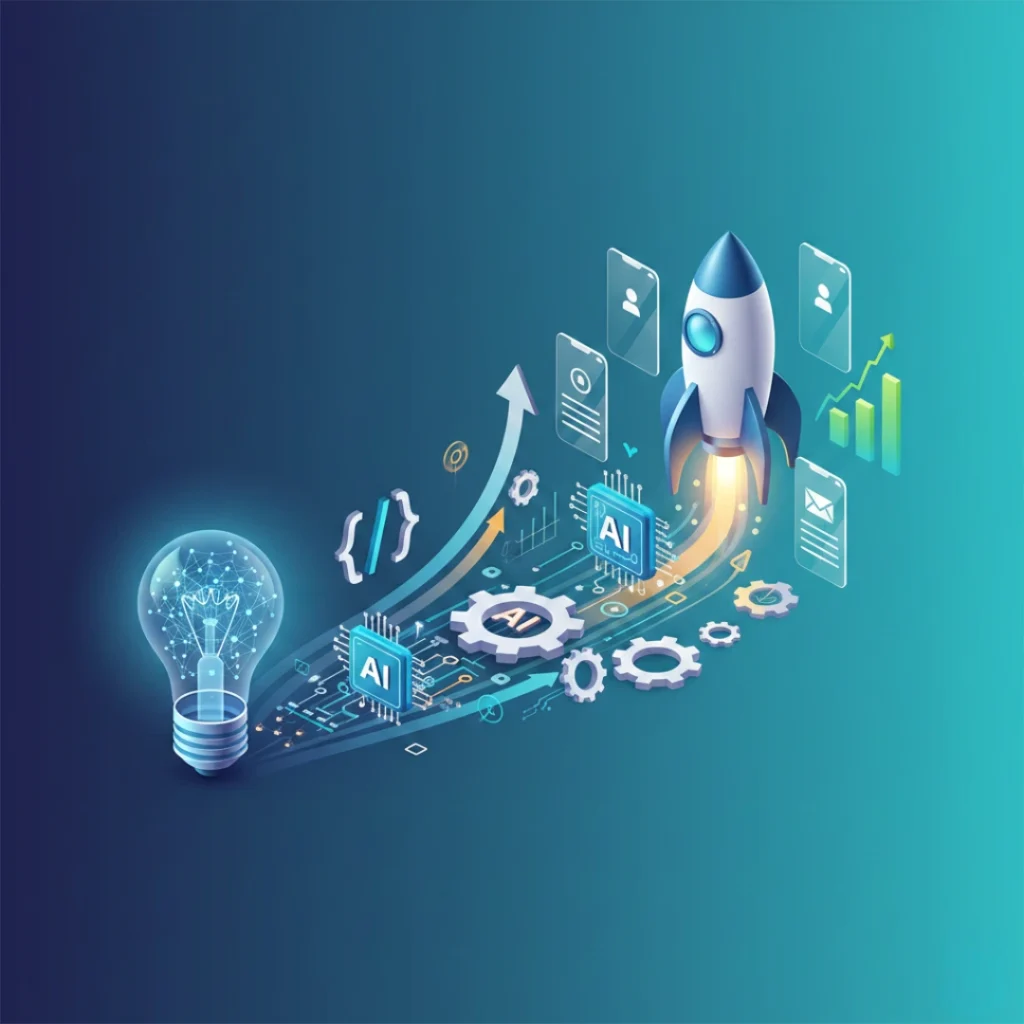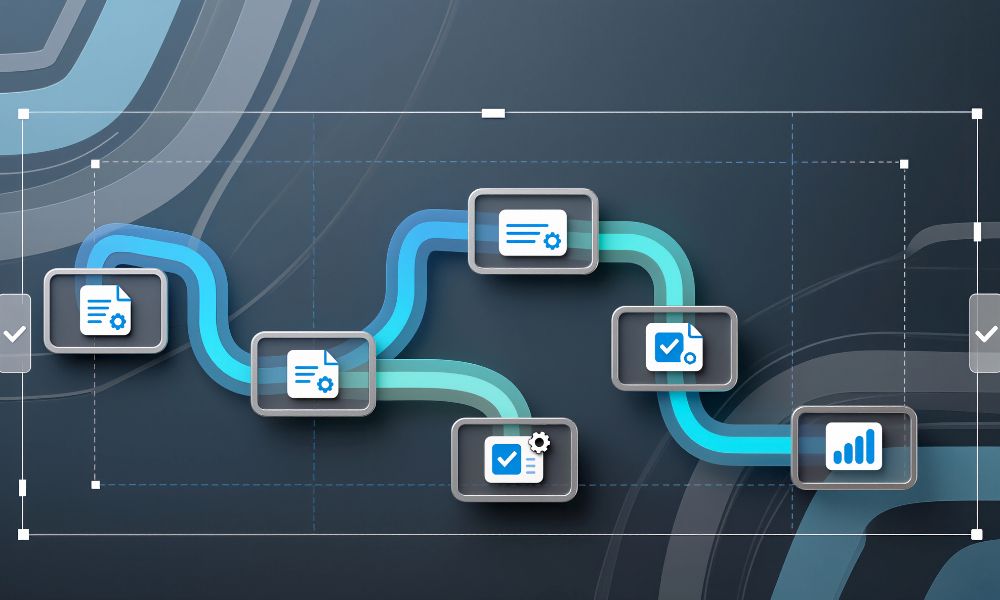We talk a lot about “Artificial Intelligence.” It’s the magic behind self-driving cars, personalized recommendations, and chatbots that can answer your questions at 3 AM. But have you ever stopped to wonder what an “AI” actually is on a fundamental level? How does it go from being a bunch of code to an active, seemingly intelligent entity that can perform tasks in the real or digital world?
The answer lies in a concept that is central to the entire field of AI: the agent.
An AI agent is not just an algorithm; it’s a complete system designed to operate autonomously in an environment to achieve specific goals. To do this, it needs a blueprint, a structure that dictates how it perceives, thinks, and acts. This blueprint is its architecture.
Understanding AI agent architecture isn’t just for developers. For business leaders, product managers, and anyone interested in technology, it demystifies AI, turning it from a magical black box into a tangible system that can be understood, evaluated, and strategically implemented.
Let’s break down how these intelligent systems actually work.
The Core Components of Any AI Agent
At its heart, every AI agent, from the simplest thermostat to the most complex humanoid robot, operates on a continuous loop. This is often called the perceive-think-act cycle. To facilitate this loop, an agent is made up of three fundamental components:
- Sensors: This is how the agent perceives its environment. Sensors are the agent’s equivalent of human senses. They gather the raw data the agent needs to understand its current state and what is happening around it.
- In the physical world: This could be a camera (vision), a microphone (hearing), a thermometer (temperature), or GPS (location).
- In the digital world: This could be an API that reads stock prices, a web scraper that pulls data from a website, or a function that reads new entries in a database.
- Actuators: This is how the agent takes action and influences its environment. Actuators are the agent’s hands, legs, and voice. They execute the decisions made by the agent’s “brain.”
- In the physical world: This could be an electric motor that turns a wheel, a robotic arm that picks up an object, or a speaker that produces sound.
- In the digital world: This could be an API call that executes a trade, a command that sends an email, or a function that writes data to a file.
- The “Brain” (The Agent Program): This is the core logic that connects the sensors to the actuators. It’s the program that processes the perceptual input (the data from the sensors) and decides what action to take. The sophistication of this brain is what determines the agent’s intelligence and capabilities. The structure of this brain is its architecture.
Types of AI Agent Architectures: From Simple Reflexes to Deep Thought
Not all AI agents are created equal. Their internal architecture dictates how they “think” and determines their complexity and power. Let’s explore the most common types, starting with the simplest and moving to the most advanced.
1. Simple Reflex Agents
This is the most basic form of an intelligent agent. It operates on a simple condition-action rule (or if-then rule). It perceives the current state of the environment and triggers a pre-programmed action if a certain condition is met.
- How it works:
if (this is the situation) then (do this action); - Key Characteristic: It has no memory of the past. Its decision is based only on the current percept. It doesn’t know what happened one second ago.
- Real-World Example: An automated vacuum cleaner that bumps into a wall (condition) and immediately changes direction (action). It doesn’t remember that it hit the same wall three times already. A smart thermostat that turns on the heat (action) when the temperature drops below 68°F (condition) is another perfect example.
- Limitation: This architecture is extremely limited. It’s only suitable for very simple, predictable environments where no memory is needed.
2. Model-Based Reflex Agents
This is a significant step up. A model-based agent builds and maintains an internal model or representation of how the world works. This model allows the agent to handle situations where it can’t see everything at once (partially observable environments).
- How it works: It uses its sensors to perceive the current state, but it also uses its internal model to keep track of the parts of the world it can’t see right now. This model is updated based on two things: (1) how the world evolves on its own, and (2) how the agent’s own actions affect the world.
- Key Characteristic: It has a memory of the past and a “state” that represents its belief about the current situation.
- Real-World Example: A self-driving car needs to know where other cars are, even if they are temporarily hidden behind a truck. Its internal model tracks the likely position and velocity of the hidden car based on its last known state. It doesn’t just react to what its camera sees right now; it acts based on its model of the entire traffic situation.
- Limitation: While it knows “what the world is like,” it doesn’t have a concept of “what it wants to achieve.” It’s still fundamentally reactive.
3. Goal-Based Agents
This is where decision-making starts to look truly “intelligent.” A goal-based agent doesn’t just react; it acts with a purpose. It knows its current state (thanks to its model) and it has a specific goal state it wants to reach.
- How it works: When faced with a decision, a goal-based agent considers different possible actions and simulates their outcomes. It asks the question: “If I do Action A, will it get me closer to my goal? What about Action B?” It then chooses the action that leads to a sequence of steps culminating in the goal. This often involves search and planning algorithms.
- Key Characteristic: It is proactive and deliberative. Its actions are chosen to achieve a future goal.
- Real-World Example: A GPS navigation system. Its current state is your location. Its goal is your destination. It doesn’t just make random turns; it considers all possible routes (sequences of actions) and selects the one that it calculates will get you to your goal most efficiently.
- Limitation: It treats all paths to the goal as equal. Reaching the destination is all that matters, whether the path was fast and smooth or slow and bumpy.
4. Utility-Based Agents
This is the most sophisticated architecture for rational agents. A utility-based agent doesn’t just have a goal; it has a way of measuring how good a particular outcome is. This measure of “goodness” or “happiness” is called utility.
- How it works: It acts like a goal-based agent but adds another layer of analysis. When multiple paths can lead to the goal, it evaluates the utility of each path. It might consider factors like speed, safety, cost, or efficiency. If there are conflicting goals (e.g., be fast vs. be safe), the utility function provides a way to trade them off.
- Key Characteristic: It aims for the best outcome, not just any outcome that achieves the goal. It can make rational decisions in situations of uncertainty by choosing the action that maximizes its expected utility.
- Real-World Example: A sophisticated ride-sharing app’s dispatch system. Its goal is to get a passenger from A to B. But it has many options. Should it send the closest driver (fastest pickup)? Or a driver with a more fuel-efficient car (lower cost)? Or a driver with a higher rating (better passenger experience)? A utility function weighs all these factors to choose the optimal driver and route for the situation.
5. Learning Agents
All the agents we’ve discussed so far are designed with a fixed agent program. A learning agent is different. It can operate on any of the above architectures, but it has an additional component: a learning element. This allows it to improve its performance over time through experience.
- How it works: A learning agent has four conceptual components:
- Performance Element: This is the core agent (e.g., a utility-based agent) that perceives and acts.
- Learning Element: This component uses feedback to make improvements to the agent’s knowledge and decision-making logic.
- Critic: The critic provides the feedback. It looks at how the agent is doing and compares it to a fixed performance standard. It tells the learning element how well the agent is achieving its goals.
- Problem Generator: This component is responsible for suggesting new, exploratory actions. This allows the agent to try things it might not normally do, leading to new discoveries and a more complete understanding of its environment.
- Real-World Example: An AI that plays chess. Initially, it might play based on a set of rules (a model-based agent). After each game, the critic tells it whether it won or lost. The learning element then adjusts the agent’s internal model, strengthening connections that led to a win and weakening those that led to a loss. The problem generator might encourage it to try an unusual opening move to see what happens. Over thousands of games, it learns to become a grandmaster.
Why This Matters for Your Business
Understanding these architectures helps you ask the right questions when considering AI solutions.
- Are you looking for a simple automation tool to handle repetitive tasks? A Simple Reflex Agent might be all you need.
- Do you need a system that can operate with incomplete information, like managing inventory based on sales trends? You’re in the realm of Model-Based Agents.
- Is your goal to optimize complex logistics or plan multi-step marketing campaigns? You need the foresight of a Goal-Based Agent.
- Do you need to make the absolute best decision by balancing multiple competing factors, like cost, speed, and customer satisfaction? You’re looking for a Utility-Based Agent.
- Do you want a system that gets smarter and more personalized over time, adapting to your customers and your business? Then you need to invest in a Learning Agent.
The world of AI is built on these fundamental principles. By understanding the architecture of an intelligent agent, you move beyond the hype and begin to see AI for what it is: a powerful and versatile set of engineering tools designed to perceive, think, and act to solve real-world problems.
Frequently Asked Questions
An AI agent is a system designed to perceive its environment and take actions to achieve specific goals. Think of it as an autonomous entity that can sense, think, and act. A simple example is a smart thermostat (senses temperature, decides to act, turns on the heat), while a complex one is a self-driving car (senses traffic, plans a route, drives the car).
An algorithm is a set of rules or a procedure for solving a problem. An AI agent is a complete system that uses algorithms to function. The agent includes the sensors (to gather data), the actuators (to perform actions), and the internal program (the “brain”) which contains the algorithms for decision-making. The algorithm is the “recipe,” while the agent is the “chef” with the kitchen and ingredients.
No. The architecture depends entirely on the complexity of the task. A simple task like an automatic light switch only needs a Simple Reflex Architecture (if it’s dark, turn on). A complex task like planning a factory’s production schedule requires a more advanced Goal-Based or Utility-Based Architecture to consider different outcomes and choose the best one.
Having a “model” means the agent maintains an internal understanding of how the world works, even the parts it can’t currently see or sense. For example, a robot vacuum might remember where furniture is located to avoid bumping into it again. This internal map is its “model,” allowing it to make better decisions than if it only reacted to what’s immediately in front of it.
A Goal-Based agent’s main objective is to find a sequence of actions that will lead to a desired goal state. It’s concerned with if it can achieve the goal. A Utility-Based agent goes a step further. It considers how well it can achieve the goal. If there are multiple paths to the goal, it chooses the one that is “best” based on a utility function, which might measure factors like speed, cost, safety, or efficiency.
They are very closely related. Machine Learning is the technical field that develops the algorithms and techniques that allow systems to learn from data. A Learning Agent is the architectural concept of an agent that incorporates these machine learning techniques to improve its performance over time. The “learning element” within a Learning Agent is powered by machine learning algorithms.
Yes, absolutely. Complex systems often use a hybrid approach. For instance, a self-driving car might use a Simple Reflex Architecture for emergency braking (if an object is too close, brake immediately!) while simultaneously using a Utility-Based Architecture for overall route planning (find the route that best balances speed and safety).
They are very much used in real products. Every AI-powered product or service you interact with is built on one or a combination of these architectural principles. From your email’s spam filter (a model-based or learning agent) to a video game’s non-player characters (often goal-based), these architectures are the fundamental blueprints for applied AI.




